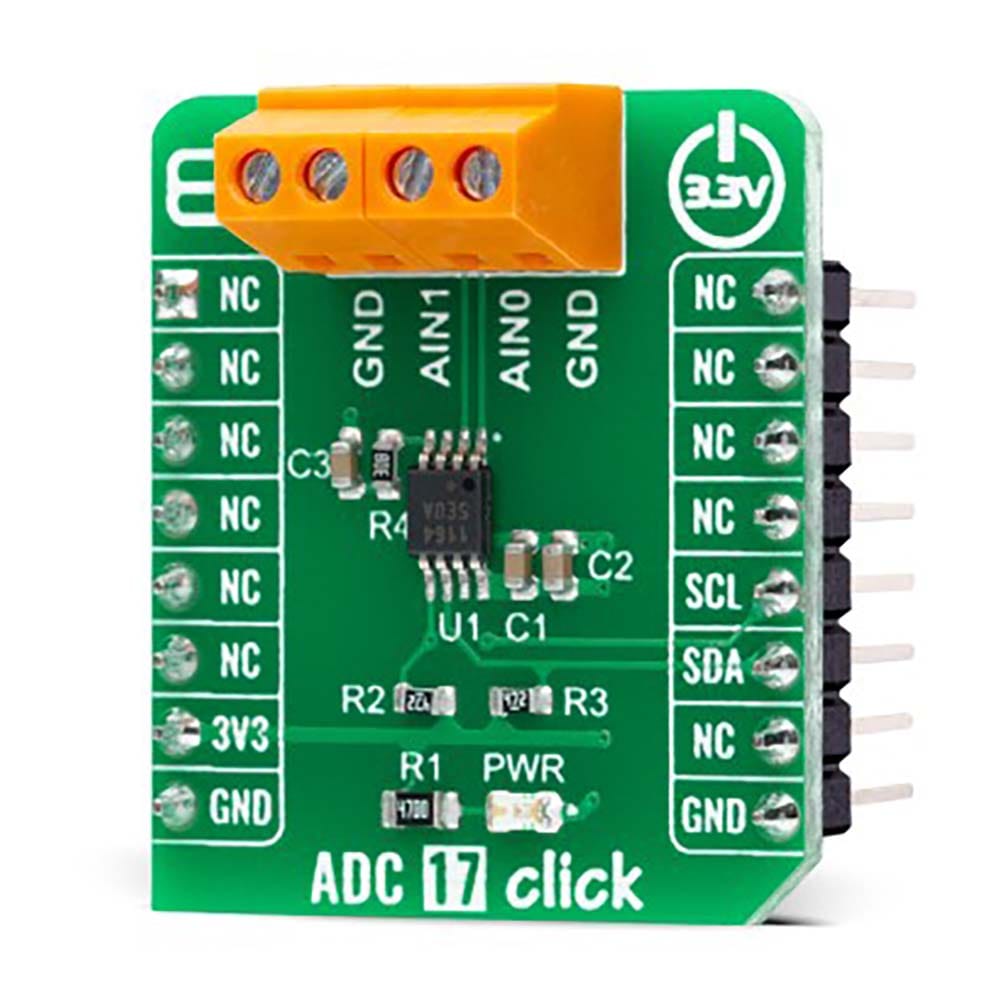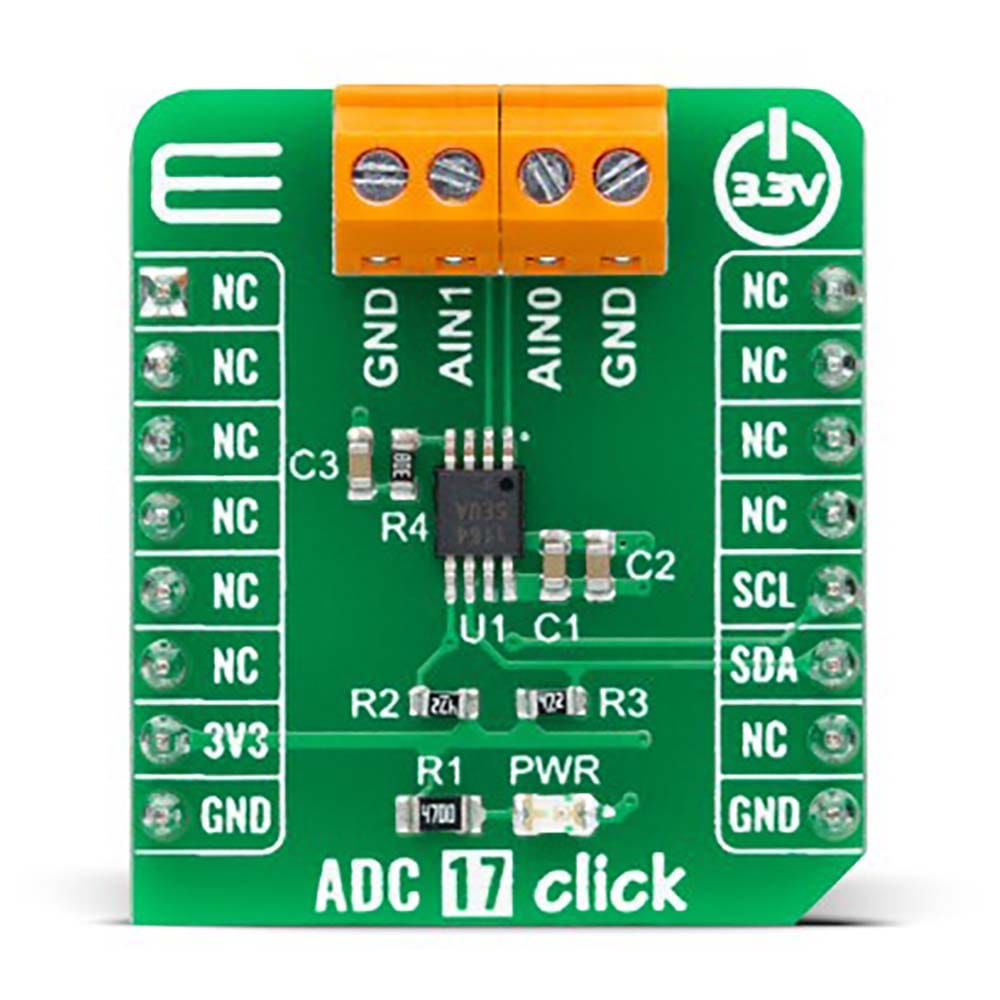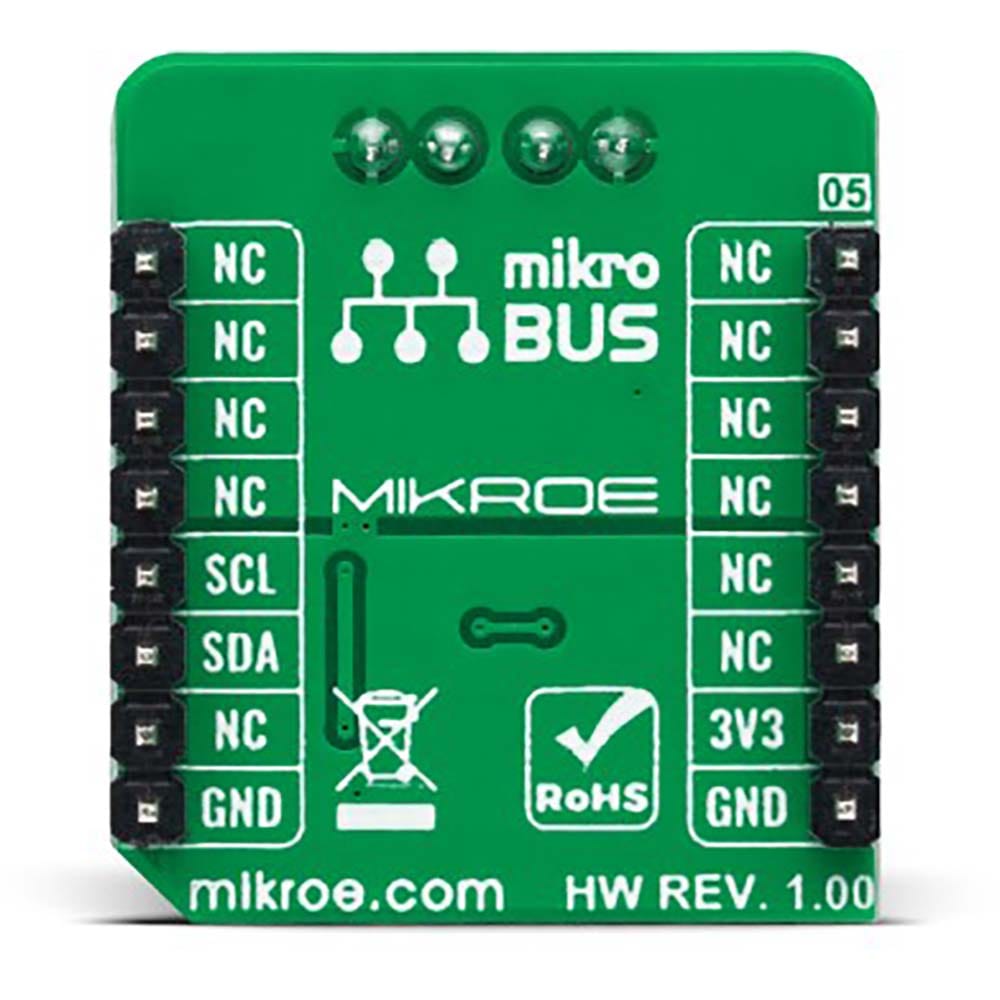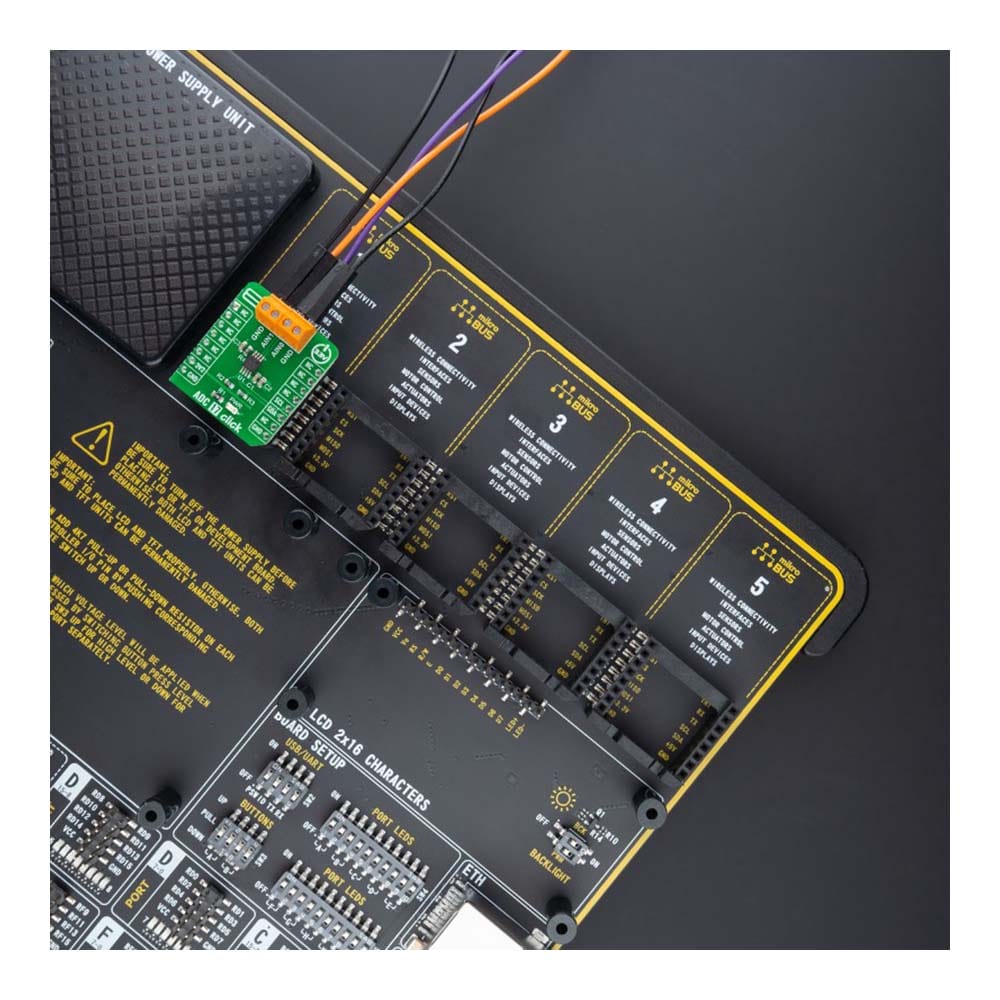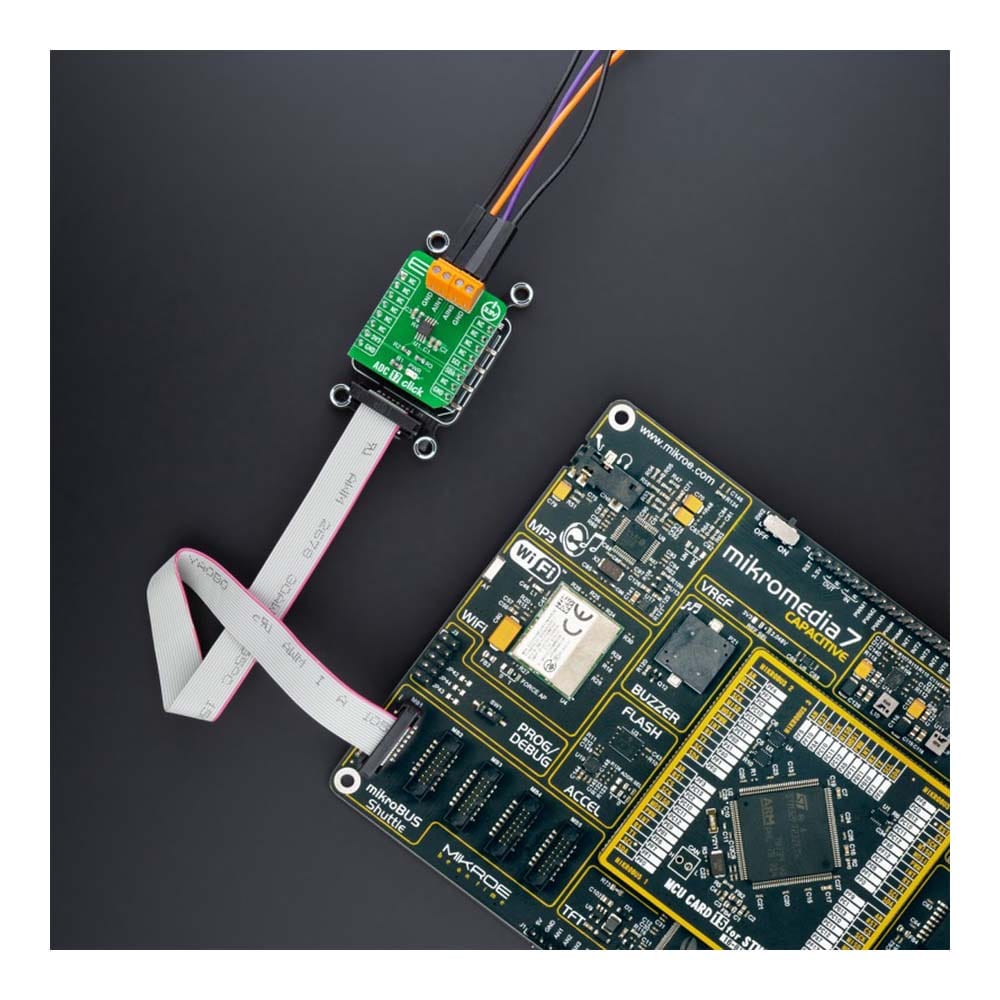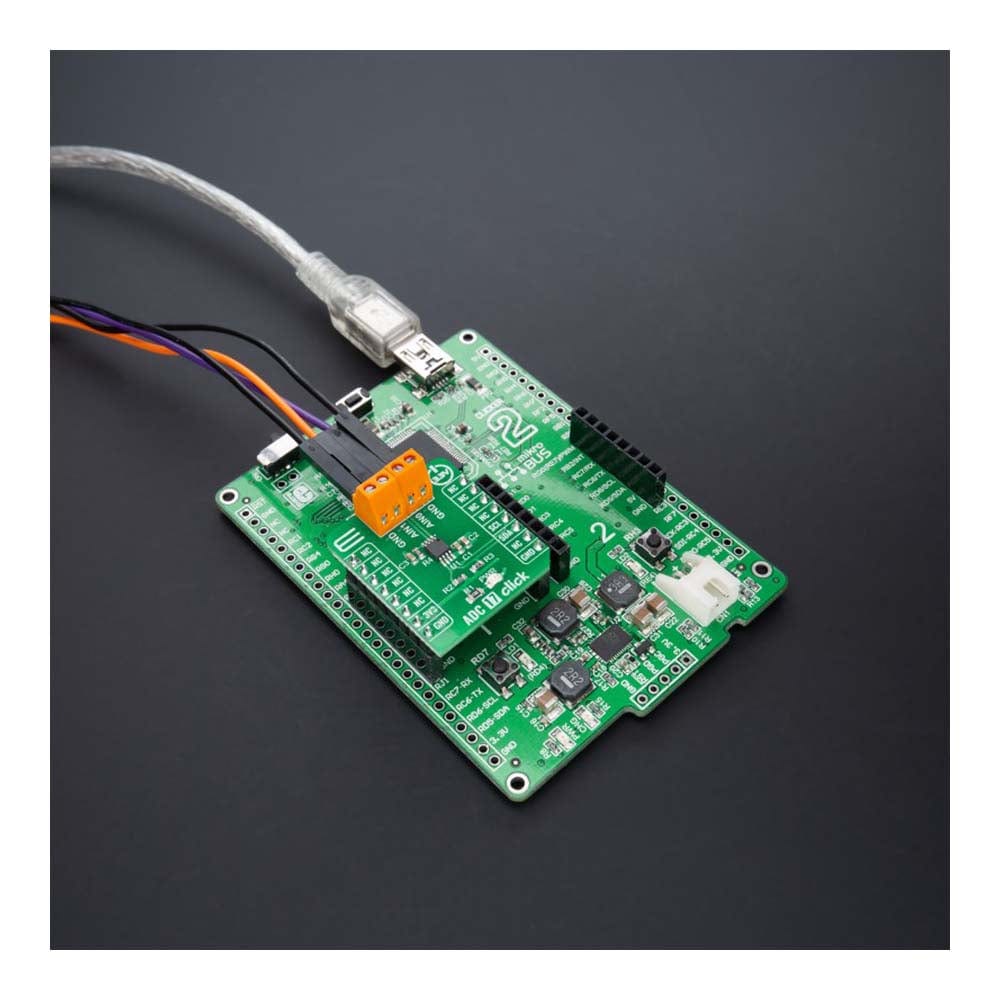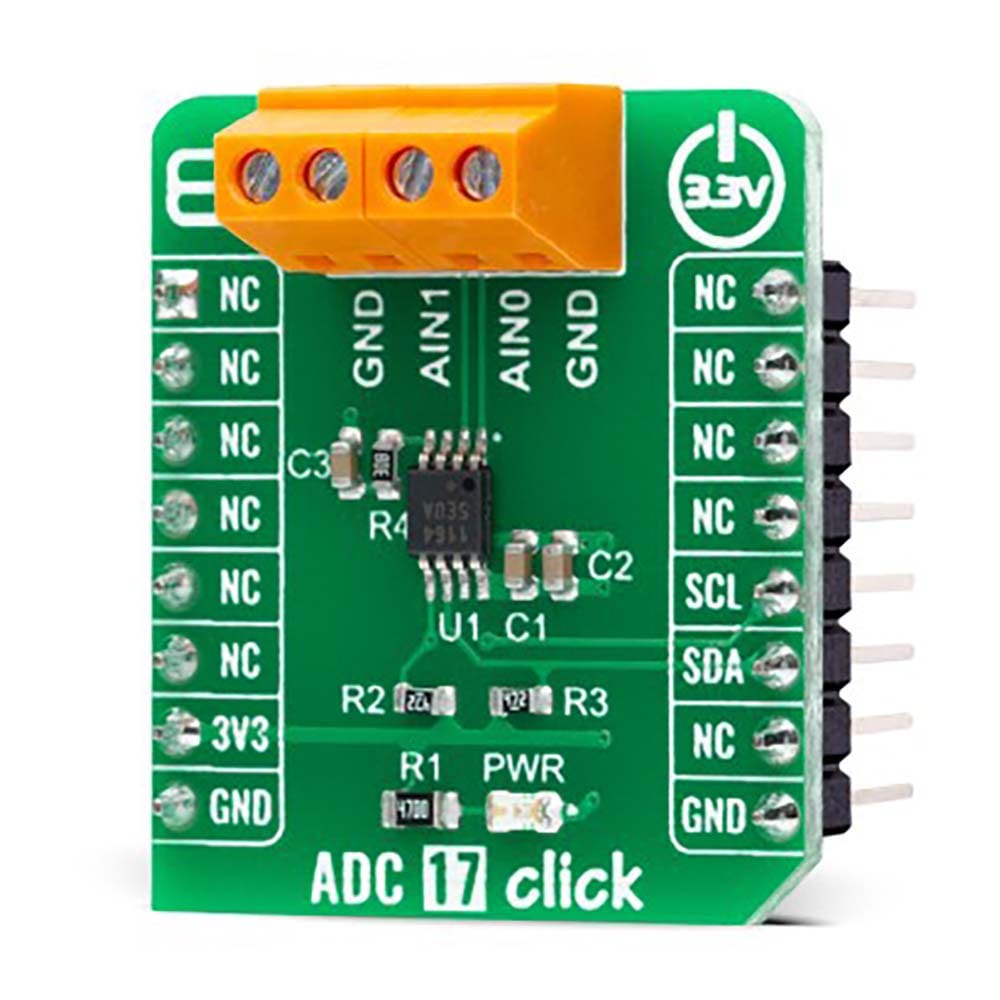
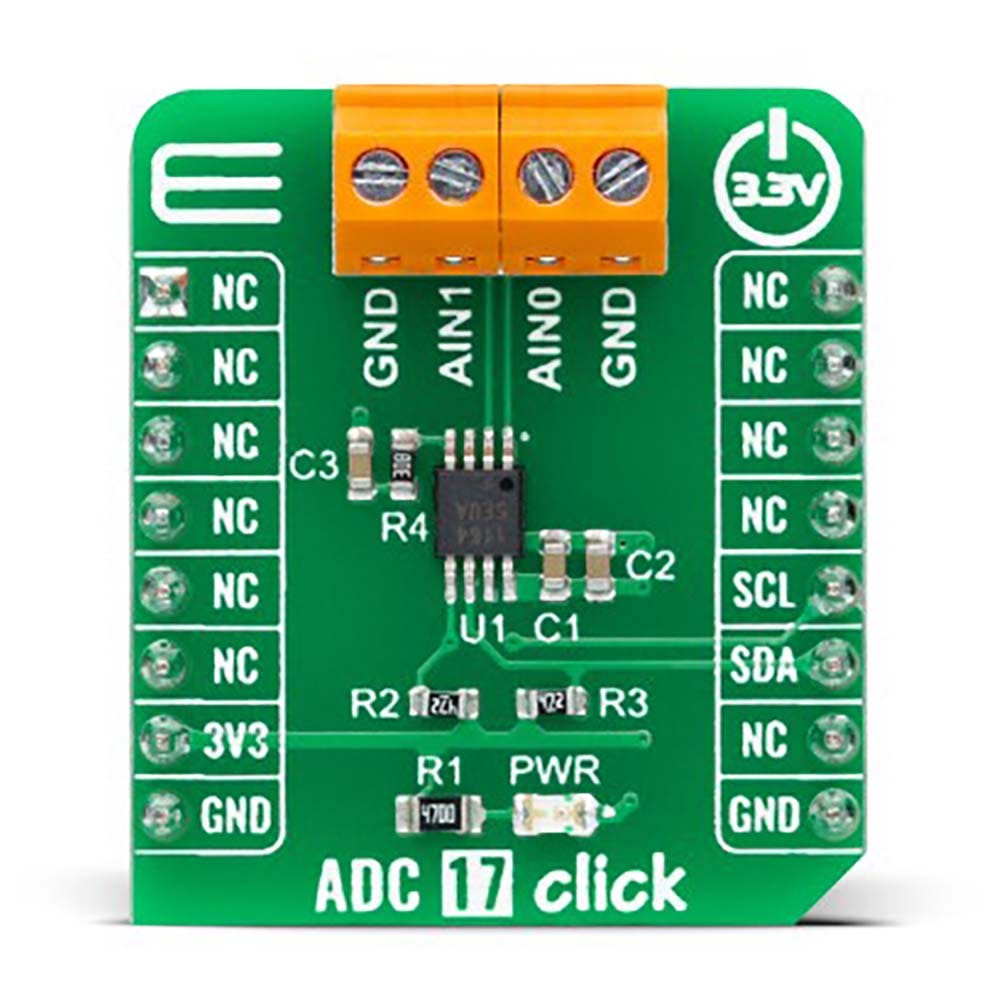

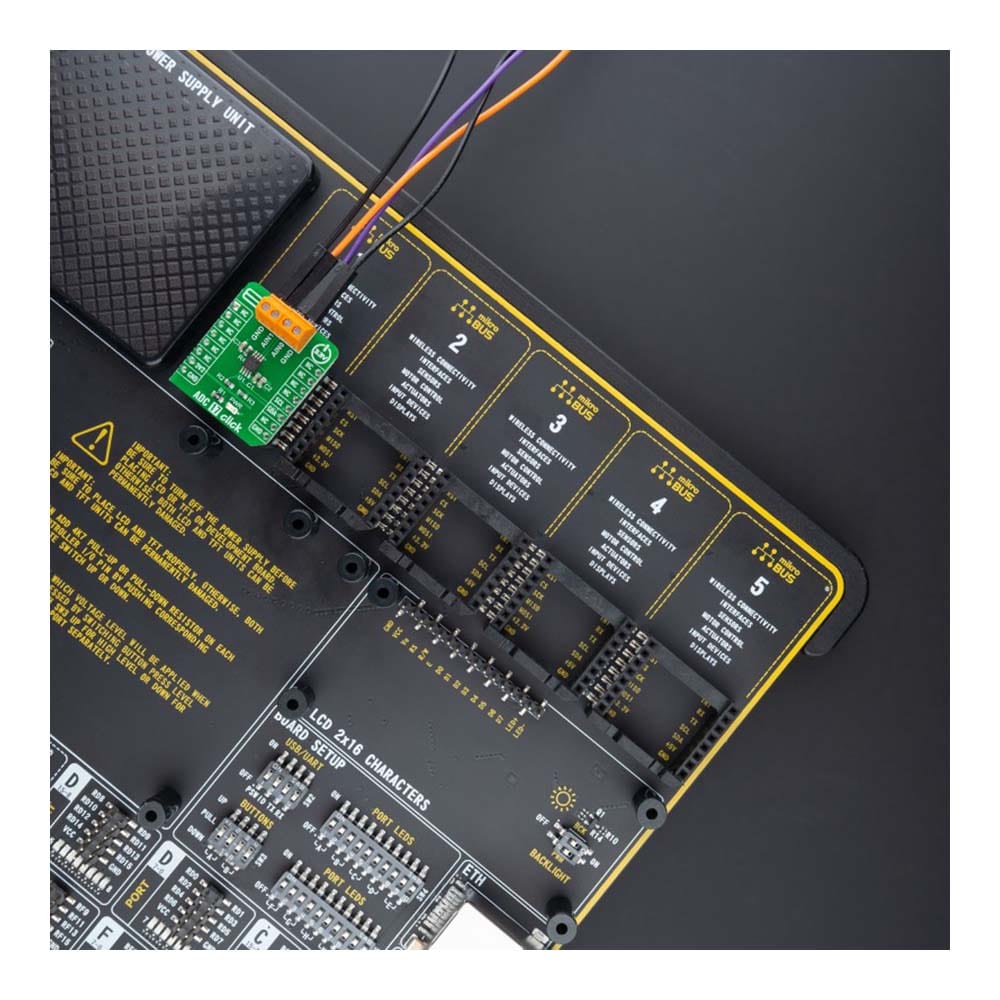
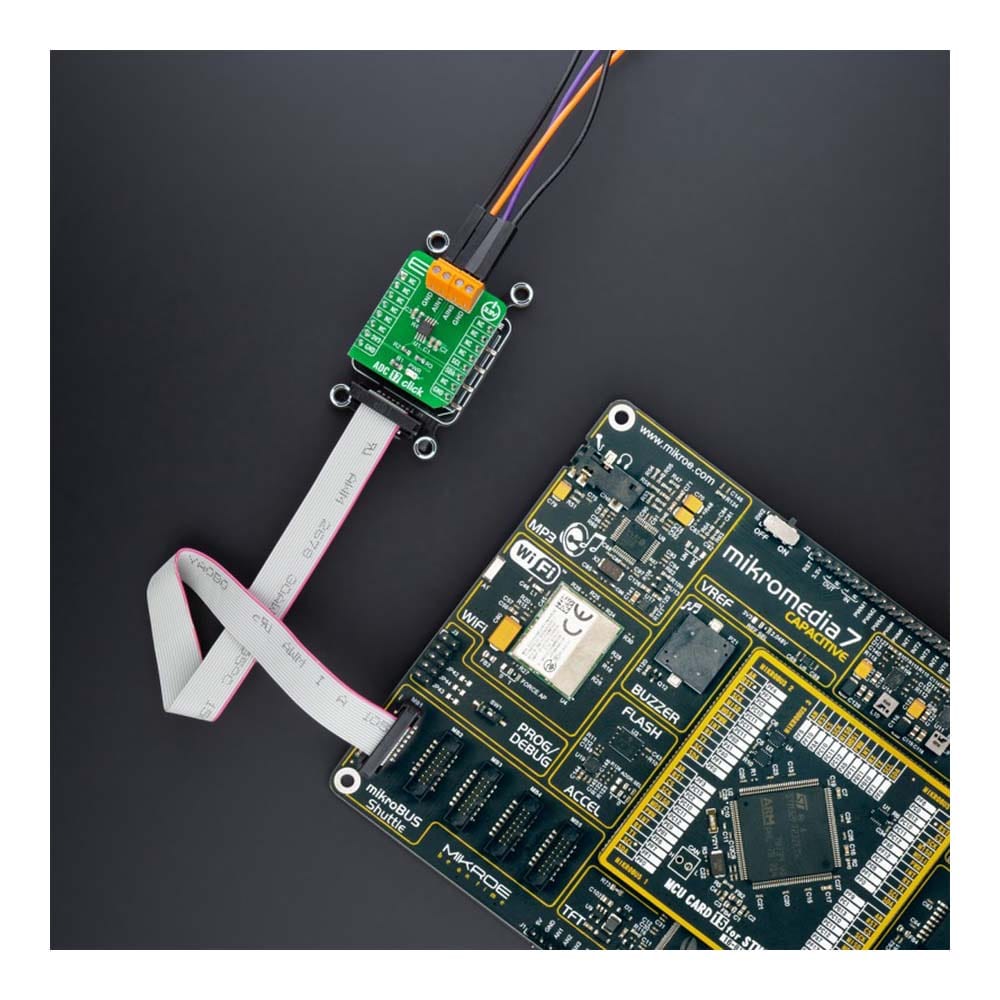
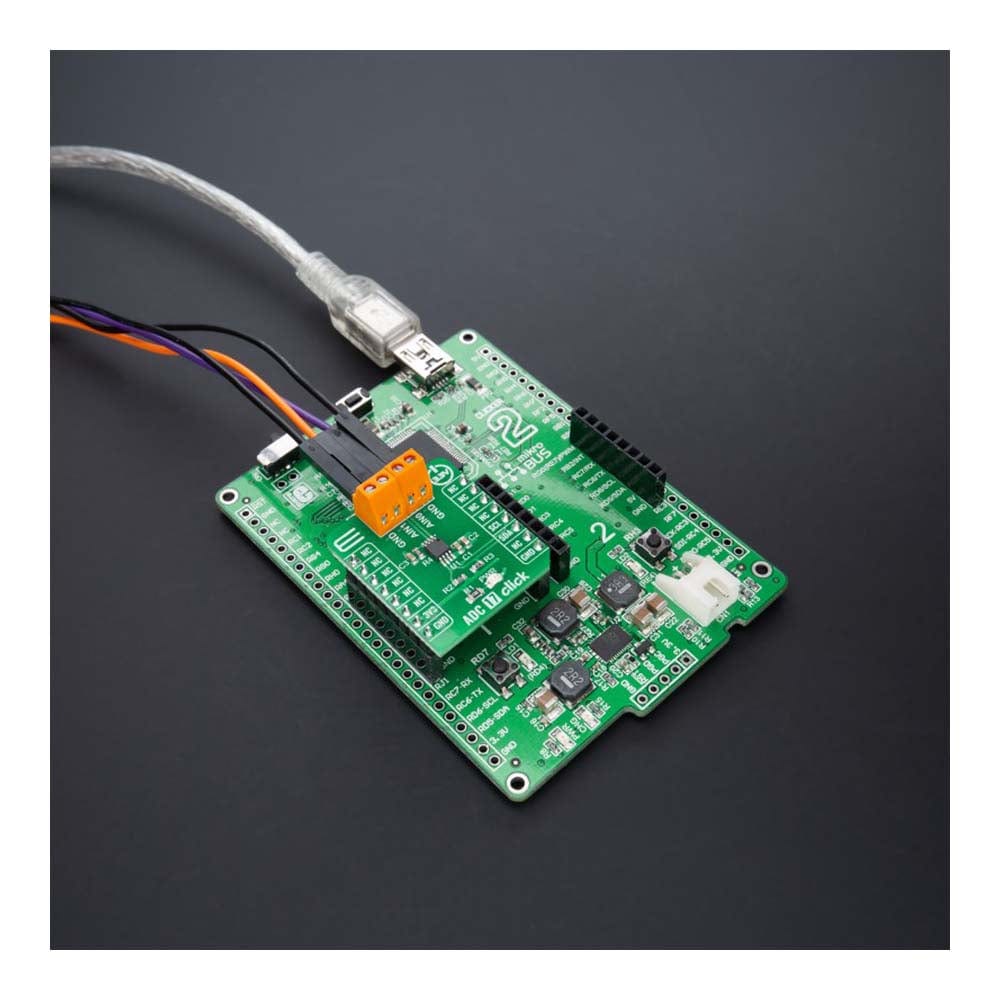
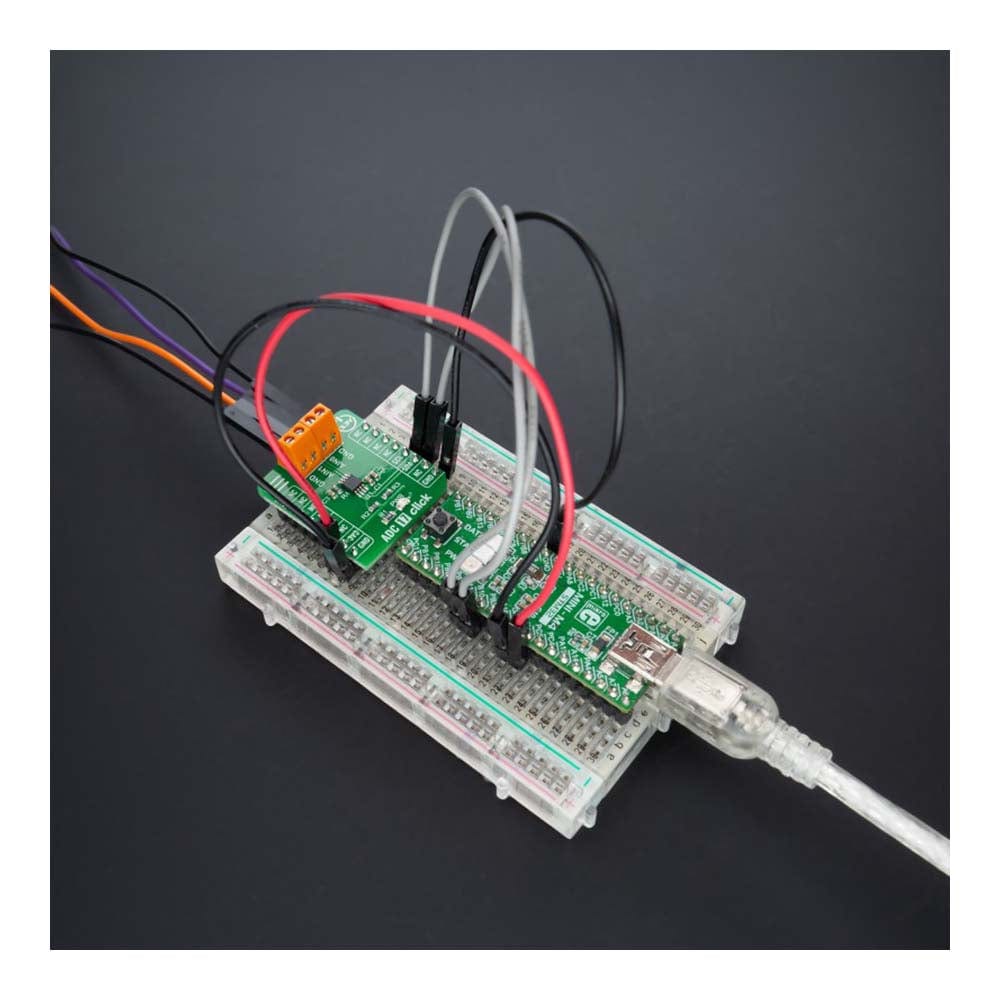
Key Features
Overview
The ADC 17 Click Board™ is a compact add-on board that contains a high-performance data converter. This board features the MAX11645, a low-power two-channel 12-bit analog-to-digital converter from Analog Devices. The MAX11645 measures two single-ended or one differential input. The fully differential analog inputs are software configurable (I2C interface) for unipolar or bipolar, and single-ended or differential operation. The 2.048V internal reference determines its full-scale analog input range. This Click board™ offers complete, high accuracy solutions for the most demanding applications from energy-harvesting sensors to portable consumer electronics, point-of-load monitoring (voltage, current, and temperature), and more.
The ADC 17 Click Board™ is supported by a mikroSDK compliant library, which includes functions that simplify software development. This Click board™ comes as a fully tested product, ready to be used on a system equipped with the mikroBUS™ socket.
Downloads
La carte Click Board™ ADC 17 est une carte complémentaire compacte qui contient un convertisseur de données hautes performances. Cette carte est équipée du MAX11645, un convertisseur analogique-numérique 12 bits à deux canaux à faible consommation d'Analog Devices. Le MAX11645 mesure deux entrées asymétriques ou une entrée différentielle. Les entrées analogiques entièrement différentielles sont configurables par logiciel (interface I2C) pour un fonctionnement unipolaire ou bipolaire, asymétrique ou différentiel. La référence interne de 2,048 V détermine sa plage d'entrée analogique à pleine échelle. Cette carte Click™ offre des solutions complètes et de haute précision pour les applications les plus exigeantes, des capteurs de récupération d'énergie à l'électronique grand public portable, en passant par la surveillance du point de charge (tension, courant et température), etc.
La carte Click Board™ ADC 17 est prise en charge par une bibliothèque compatible mikroSDK, qui comprend des fonctions qui simplifient le développement logiciel. Cette carte Click Board™ est un produit entièrement testé, prêt à être utilisé sur un système équipé du socket mikroBUS™.
| General Information | |
|---|---|
Part Number (SKU) |
MIKROE-4966
|
Manufacturer |
|
| Physical and Mechanical | |
Weight |
0.02 kg
|
| Other | |
Country of Origin |
|
HS Code Customs Tariff code
|
|
EAN |
8606027389467
|
Warranty |
|
Frequently Asked Questions
Have a Question?
Be the first to ask a question about this.

